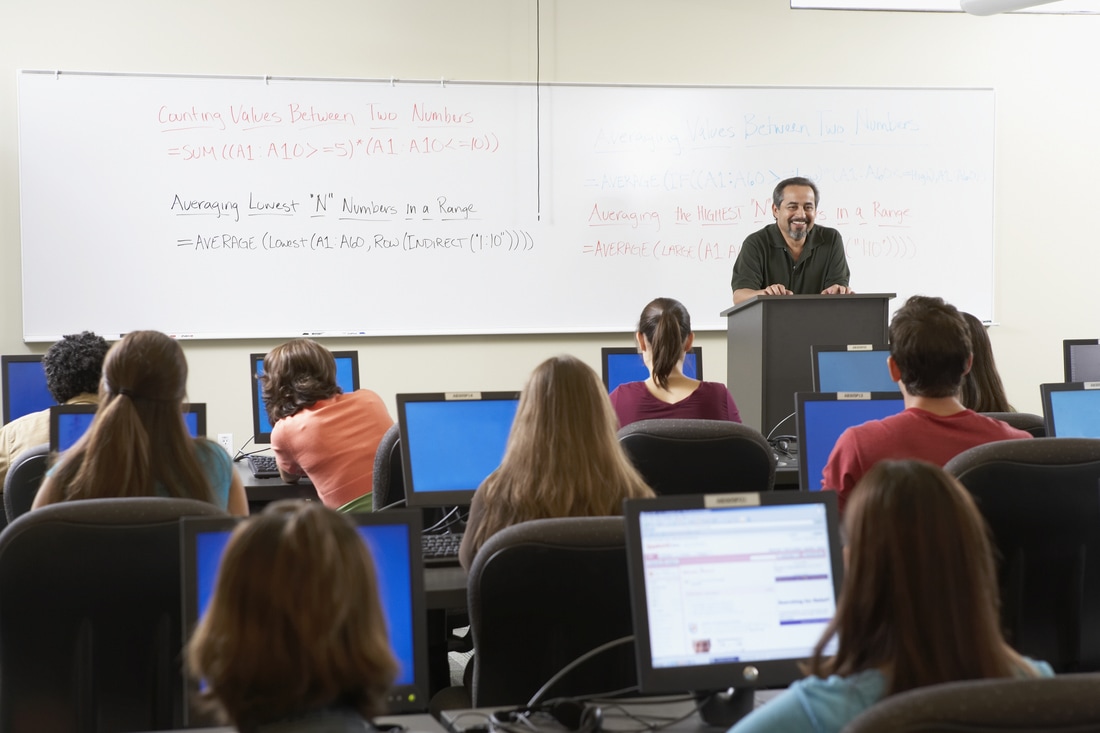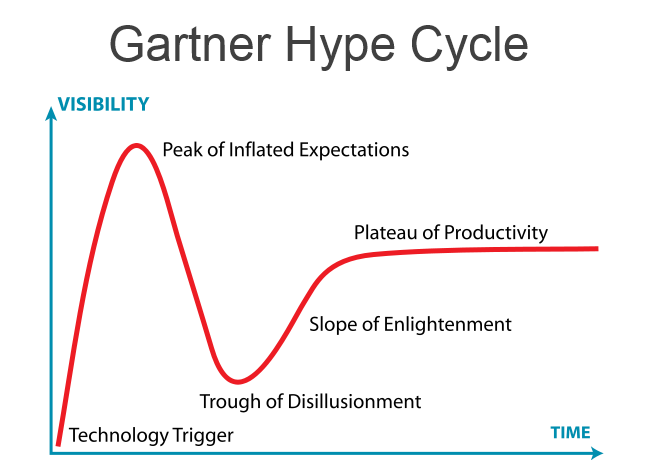|
Looking back at the previous post on this blog, The Debate Over Learning Styles, we quoted psychology professor Dr Tesia Marshik on the role of meaning in learning: ...in order to retain information, we have to organize it in a way that's meaningful, right? We need to make connections to it, through our experiences, or coming up with our own examples.... There's a lot of research to support this idea that most of what we learn is stored in terms of meaning, and not according to images or auditory sounds. A couple of recent articles in Lapham's Quarterly look at the process of discovery, and how meaning is derived through that process. In The Turning Sky: Discovering the Pyramid Texts, Susan Brind Morrow describes the challenges of translating ancient texts accurately and meaningfully. While working on a new translation of an early Egyptian religious pyramid text, Morrow found previous translations incomprehensible, seemingly a "disconnected collection of magic spells about snakes mixed into an incoherent myth involving the dead pharaoh with various animals and gods." As I looked at the spare and elegant hieroglyphic writing on the pyramid walls, the question arose: Would writing of this complexity and length be executed with such care in order to say something so meaningless? I realized that the meaning of the Pyramid Texts was still undiscovered; the text had been buried for a century by academic incomprehension, as it was for millennia by desert sand. As Morrow unlocks the true meaning of the hieroglyphics, she reveals poetry that still resonates today, and provides insight into the worldview of the authors, writing thousands of years ago. Through scholarship and inspiration, she renders the obscure comprehensible, establishing historical, cultural, and linguistic context in the process. In Homo Faber: Discovering the infinite universe, Lewis H. Lapham takes a broad look at discovery, knowledge, and the joy of learning: A probable contender for a Nobel Prize at the age of eighty-one, Vera Rubin had been asked if she was troubled by the near-infinite expanse of human ignorance. The question was not gratuitous. Rubin’s eminence as an astronomer rested on her finding in the universe five, maybe ten times the mass of energy dreamed of in the cosmologies of Albert Einstein and Max Planck. Not only was the universe more infinite than previously imagined, but the newly discovered bulk of it was composed of dark matter destined to remain unknowable because it was not formed of the same atomic fairy dust as all things animal, mineral, and vegetable, celestial and terrestrial, to which mankind gives the names of nature ceaselessly creating itself.
1 Comment
Thirty prominent academics in neuroscience, education, and psychology have come out against the focus on learning styles in the classroom. In a letter to the Guardian, the group of experts said, first and foremost, "there is no coherent framework of preferred learning styles," with more than 70 different models of learning styles in existence. Calling learning styles a "neuromyth" the group asserts, "...there have been systematic studies of the effectiveness of learning styles that have consistently found either no evidence or very weak evidence to support the hypothesis that matching or 'meshing' material in the appropriate format to an individual’s learning style is selectively more effective for educational attainment." A primary concern is that learning styles education takes time and money away from evidence-based pedagogies. So, should we throw learning styles out the window? Undoubtedly, this is an impressive group of academics, and we would do well to listen to them. At the same time, the group is composed mainly of neuroscientists and psychologists, and their direct education experience relates to teaching elite university students. A related Guardian article reports, "...research in 2012 among teachers in the UK and Netherlands found that 80% believed individuals learned better when they received information in their preferred learning style. In 2013, research by the Wellcome Trust found that 76% of teachers had used learning styles in their teaching." So are these professional educators all wrong? It is worth noting that the academic group, while using the word "neuromyth," avoid denying the existence of learning styles altogether. Instead, they focus on the mushy definition of the term, and the fact that no learning styles approach has yet been validated by science. Meanwhile, interactive, multimedia, and adaptive educational technologies implicitly acknowledge the benefits of multi sensory learning. Adaptive educational technologies, particularly the data-driven components, are still in a very early stage. Perhaps better evidence for learning styles will emerge when data naturally drives edtech to develop particular types of products. Certainly, even if we recognize that learning styles exist, there are drawbacks to relying too heavily on them during instruction. In the Moodle forum, Matt Bury notes that "learning styles encourage learners to use the same study strategies regardless of context, as personal rules of thumb, and that this encourages learners to ossify their study habits rather than to allow them to develop and grow." Here Bury is mirroring one of the concerns voiced by the academic group: learning styles can have a tendency to pigeon-hole students. He goes on to discuss the difference between a fixed vs growth mindset when it comes to learning styles, proposing "that learning styles are actually strategic, adaptive strategies that are developmental and modifiable." In the following TED talk, Tesia Marshik comes down firmly against learning styles, saying that research clearly indicates that they do not exist. In this compelling lecture, Dr Marshik states that ..."in order to retain information, we have to organize it in a way that's meaningful, right? We need to make connections to it, through our experiences, or coming up with our own examples.... There's a lot of research to support this idea that most of what we learn is stored in terms of meaning, and not according to images or auditory sounds." Dr. Marshik makes a strong case. At the same time, even she acknowledges the idea of learning styles has a strong intuitive appeal. Our group of academics made the same point: "This belief has much intuitive appeal because individuals are better at some things than others and ultimately there may be a brain basis for these differences." So while the broader academic community seems to increasingly regard learning styles as a myth, it may be premature to jettison learning styles completely. Stephen Downes: My take is that many people who talk about learning styles are not instructionists and are working toward more than simple recall -- they are, for example, constructivists seeking to foster understanding, creativity, and value assessment. It's true, as Moore says, that "the best way to honor people's individuality isn't to shove them into simplistic categories." But it isn't to treat them as identical robots either, and this requires beginning with the person, and not with the content. Carol Tomlinson: It may be that neuroscientists are hearing us narrowly because we've envisioned and explained the concept of learning style more narrowly than we should have. There is something in the idea of learning style to which so many people relate, that it's worth continuing to study what goes on in learning that is "something like" a learning style. Here are a few helpful recent articles. First, we have some resources for project-based learning:
STAR is a proponent of place-based education (PBE), a philosophy that aims to immerse students in the local history, culture and ecology of the area they live and learn in, using these as the foundation for academic study. Schools that practice PBE view the community as an extension of the classroom rather than a separate entity. At STAR, PBE is apparent in every aspect of the school, from the food served to the community-based service projects students design and complete every year. In previous posts, we have taken a look at educational results involving edtech. Studies are starting to show measurable benefits when it comes to personalized and adaptive learning, and MOOCs are helping millions of learners to acquire valuable skills. As edtech comes into its own, it can be instructive to examine factors that influence adoption of technology. For instance, stakeholder perceptions can accurately reflect real experiences of edtech in the classroom, or not. This week, EdSurge posted an article on educational technology by Jeffrey R. Young that reviews a recently published book, To My Professor: Student Voices For Great College Teaching. Young notes the predictable tension between professors and students when it comes to technology in the classroom. Mentioning that some professors ban technology from the classroom, Young speaks with one of the book's authors, Meaghan Markey. Markey, who graduated from Michigan State in December, co-wrote the chapter about technology. It includes research revealing students spend 20 percent of class time on their phones and includes interviews arguing that students are more engaged when laptop lids are shut and all phones put away. Markey, however, says that often students use phones to look up information related to class rather than interrupting the professor to ask a question. Here we can see perception running into a more nuanced reality. In a higher education setting, where students are paying for their education, and expected to take full responsibility for their learning, a "no tech" policy essentially takes useful tools out of students' hands. Looking at an area where perception likely reflects a real problem, Markey says that students continue to face significant issues when it comes to functionality of edtech products. For Mackey, the biggest takeaway from the chapter is how frustrating online classes really can be. During her own college career she took in-person, hybrid and fully online courses. And in online courses, she often faced technical glitches that threw her off track. “It’s simple things, like, sometimes Skype doesn’t work correctly when you’re doing a Skype interview,” she said. “Or your professor says use this specific program, and it doesn’t work on your computer.” The quickest way to discourage learner engagement is by providing a product that doesn't work. Technical problems can leave an entire group of stakeholders resistant to educational technology.
Which is why thorough and detailed quality assurance (QA) procedures is so essential. Young learners undoubtedly want interactive, media-rich educational experiences. But tech-savvy students have little patience for glitchy software. And functionality issues give resistant stakeholders an easy talking point. If you are looking to ensure the functionality of your educational product across platforms and devices, please feel free to get in touch with Mosaico Solutions. Our QA testing processes help you maximize sales by ensuring that your target audience receives a product that functions as intended. Times of acute discord can provide unique opportunities for examining the benefits of core values like tolerance. Tolerance education can be highly beneficial for maintaining a harmonious and productive atmosphere within schools and workplaces. To teach tolerance in any setting, start by defining the term, and establishing the significance of tolerance as a virtue and as a practical functional capability for individuals and groups. First, the definition: tolerance: a willingness to accept behavior and beliefs that are different from your own, even if you disagree with or disapprove of them Note that tolerance implies some form of opposition or conflict. If we agree with a particular person, or are apathetic to an idea, there is nothing to "tolerate." Tolerance requires restraint, and putting up with our own discomfort. As we broaden our understanding of tolerance, we can see and explore links to other concepts, such as fairness, justice, compassion, and love. Tolerance has been promoted as a civic virtue since the 17th century, when John Locke identified it as a key component of equal rights within a society. It has become a core American value, codified within our Constitution and our system of laws. We view and admire the personification of tolerance in figures such as Martin Luther King Jr. and Gandhi. Tolerance is also a shared value internationally. UNESCO provides perhaps the most useful definition of tolerance, as guiding social principle, in its 1995 Declaration of Principles of Tolerance: 1.1 Tolerance is respect, acceptance and appreciation of the rich diversity of our world's cultures, our forms of expression and ways of being human. It is fostered by knowledge, openness, communication and freedom of thought, conscience and belief. Tolerance is harmony in difference. It is not only a moral duty, it is also a political and legal requirement. Tolerance, the virtue that makes peace possible, contributes to the replacement of the culture of war by a culture of peace. UNESCOs definition is so useful because it recognizes the potential pitfalls of tolerance, alongside the benefits. It recognizes that there are limits to what should be tolerated. When we teach tolerance, we can work with learners to explore and define these limits.
It is important to note that tolerance is not merely an idealistic moral principle. It is also a practical, effective capability within groups and societies to get optimal results. In short, tolerance is a best practice for success in education and in business. From a practical perspective, tolerance helps us live and work together, enhancing harmonious interaction and productive relationships. For schools, tolerance education creates more open learning environments, especially for disadvantaged learners. Moreover, it teaches all students how to function most effectively in a diverse world. For companies, workplace training can lead to improved communication and a more cooperative employee group, with resulting benefits to productivity. Tolerance training also reduces employee conflict, and the potential liability associated with this conflict. Looking at some resources,
One substantial benefit of educational technology is the broad expansion of active learning options available to educators and students. Active learning allows students to engage and interact with educational content, through problem-solving, reading, writing, speaking, listening, collaborating, simulating, and performing activities. By definition, active learning is defined by student participation in the learning process. In comparison to lecture-based education, active learning has been shown to improve educational results in numerous studies. The underlying advantages are generally intuitive, and mostly uncontroversial, but are nonetheless worth examining. Looking at lecture-based instruction, we know that most students have trouble assimilating concepts during lectures. Recent studies show that students only hear approximately half of the words spoken by the instructor, with this percentage decreasing as the lecture proceeds over time. By adding visual aids, retention improves by 14-38 percent. Today's universities tend to record lectures, so student's can review course lectures as many times as they like, improving retention rates. Of course, this review process is, in itself, a form of active learning. Perhaps the most cited recent scholarly study on active learning was published in 2014, in Proceedings of the National Academy of Sciences. Most notably, the study showed that active learning students achieved test scores that were 6% higher than their counterparts in traditional lectures. Moreover, the lecture-based students were 1.5 times more likely to fail the course. Looking beyond this recent study, academics have been evaluating the active learning model for decades. In a 2004 review of the research, Bucknell University's Michael Prince concludes, "...the empirical support for active learning is extensive. However, the variety of instructional methods labeled as active learning muddles the issue." Prince delves into statistical results for a variety of active learning approaches, with this interesting summary: What do these results mean in real terms instead of effect sizes, which are sometimes difficult to interpret? With respect to academic achievement, the lowest of the three studies cited would move a student from the 50th to the 70th percentile on an exam. In absolute terms, this change is consistent with raising a student’s grade from 75 to 81, given classical assumptions about grade distributions.* With respect to retention, the results suggest that collaboration reduces attrition in technical programs by 22 percent, a significant finding when technical programs are struggling to attract and retain students. Furthermore, some evidence suggests that collaboration is particularly effective for improving retention of traditionally under-represented groups. So again we see the 6% difference in test scores.
Taking a look at some practical applications of active learning:
Yesterday, Harvard and MIT released a new report: HarvardX and MITx: Four Years of Open Online Courses. Their study takes a look at participation and online learner behavior in MOOCs run by the two universities. Besides noting the steady growth in MOOC participation, the study provided some telling information on student demographics: Demographic statistics of note include a median learner age of 29 years old, a 2:1 male-to-female ratio (67 percent male, 33 percent female), and significant participation from learners in other countries (71 percent international, 29 percent from the United States). One takeaway: MOOCs are increasing the availability of high quality education to a wider audience throughout the world. The gender disparity likely has some relation to the types of subjects that are popular. Computer science courses are the hubs of the MOOC curricular network. Tracking participants who enroll in multiple courses over time reveals networks among courses and curricular areas. The new report found MITx and HarvardX computer science courses are the “hubs” of the network. These courses are the largest (compared to science, history, health, and other subjects) and route more participants to other disciplinary areas than they receive. Women earn approximately 18 percent of undergraduate computer science degrees, thus the MOOC imbalance. The Economist also published an article on MOOCs this week, Established education providers v new contenders. The article notes that despite the initial promise, "Now MOOC sceptics are more numerous than believers. Although lots of people still sign up, drop-out rates are sky-high." This is the Gartner Hype Cycle in action, from the Peak of Inflated Expectations to the Trough of Disillusionment. Last week, we noted in this blog that personalized and adaptive learning models are starting to see positive learning outcomes. It looks as though MOOCs are also starting to climb the Slope of Enlightenment. From The Economist article: Nonetheless, the MOOCs are on to something. Education, like health care, is a complex and fragmented industry, which makes it hard to gain scale. Despite those drop-out rates, the MOOCs have shown it can be done quickly and comparatively cheaply. The Khan Academy has 14m-15m users who conduct at least one learning activity with it each month; Coursera has 22m registered learners. Those numbers are only going to grow. FutureLearn, a MOOC owned by Britain’s Open University, has big plans. Oxford University announced in November that it would be producing its first MOOC on the edX platform. Education is still in the early stages of large-scale disruption. For one thing, the modularization and democratization of education seems to be driving a trend from theoretical to practical, toward learning that will be professionally useful. This would seem to be a natural evolution, as students gain increasing control over the course options available to them.
For companies looking at digital training solutions, educational outcomes can have a big impact on the bottom line.
Compliance, sales, skills: business leaders can certainly enhance the value and performance of an organization through effective training. But, all too often, workplace training fails to result in lasting benefits. For businesses, it’s essential that employees do not simply forget training immediately after it’s given. Training Suggestions To implement truly effective workplace training, we have a few suggestions:
There is a clear trend toward using meditation and mindfulness practices in schools, both for students and for professional development. The benefits include improved concentration, cognitive performance, and greater capacity for compassion, all of which are helpful during learning and teaching. In "Evidence for Mindfulness: Impacts on the Wellbeing and Performance of School Staff," Emeritus Professor Katherine Weare of the Universities of Exeter and Southampton looks at peer-reviewed studies, showing substantial benefits, including
In the Holistic Me program at Coleman, “which focuses on prekindergarden through fifth-grade students,” administrators already noticed a difference in the first year. “Instead of the students fighting or lashing out,” says principal Carlillian Thompson in the video above, they started to use words to solve their problems.” None of the students in the program have received suspensions or detentions, and many have become leaders and high achievers. Crooked Creek Elementary School in Indianapolis has a similar program: It might sound strange, but in a fast-paced classroom, teachers at Crooked Creek say just having their students close their eyes and listen for a minute can help them improve their ability to focus. It’s part of the school’s efforts to incorporate the tenets of the growing academic field known as “educational neuroscience” into the classroom. And at Visitacion Valley Middle School in San Francisco: In 2007 a meditation programme called Quiet Time was brought in to meet some of these challenges. “When I first heard about it I thought it probably wasn’t going to work,” says O’Driscoll. “We get thrown a new thing every couple of years so I didn’t put too much faith in it.” But in April, just a month after meditation began, teachers noticed changes in behaviour. “Students seemed happy,” says O’Driscoll. “They worked harder, paid more attention, were easier to teach and the number of fights fell dramatically.” These are some compelling stories! For educators thinking of implementing meditation or mindfulness practices in their schools, here are a few links to check out:
Edutopia: Resources & Downloads for Meditation in Schools Mindful Teachers: Mindfulness Activities and Teaching Resources Mindful Schools: Resources to Introduce Mindfulness to Schools To get us feeling like Indiana Jones going into the weekend, here are a couple of fantastic archaeology stories. Both describe intriguing discoveries, made all the more interesting by the people who found them. First is this BBC story about Stuart Wilson, a 37-year-old from Wales who used his £32,000 life savings to buy a 4.6 acre field in Monmouthshire. Wilson "was convinced he had located the site of 13th Century Trellech - once Wales' largest city." It turns out he was right. Now, 12 years later, he believes he has revealed the footprint of a bustling iron boom town from the 1200s - and he does not regret his decision. Wilson essentially has taken a vow of poverty to excavate this lost city. Impressive dedication! Looking now to Greece, Smithsonian Magazine gives us an update on the warrior grave that was found in Pylos last year, and sets the scene of the discovery: The season had not started well. The archaeologists were part of a group of close to three dozen researchers digging near the ancient Palace of Nestor, on a hilltop near Pylos on the southwest coast of Greece. The palace was built in the Bronze Age by the Mycenaeans—the heroes described in Homer’s epic poems—and was first excavated in the 1930s. The dig’s leaders, Jack Davis and Sharon Stocker, husband-and-wife archaeologists from the University of Cincinnati, in Ohio, had hoped to excavate in a currant field just downslope from the palace, but Greek bureaucracy and a lawyers’ strike kept them from obtaining the necessary permits. So they settled, disappointed, on a neighboring olive grove. They cleared the land of weeds and snakes and selected a few spots to investigate, including three stones that appeared to form a corner. As the trench around the stones sank deeper, the researchers allowed themselves to grow eager: The shaft’s dimensions, two meters by one meter, suggested a grave, and Mycenaean burials are famous for their breathtakingly rich contents, able to reveal volumes about the culture that produced them. Still, there was no proof that this structure was even ancient, the archaeologists reminded themselves, and it might simply be a small cellar or shed. The entire in-depth article is fascinating, so check it out!
|
Intelligence AmplifiedArchives
April 2023
CategoriesRead our magazine on Flipboard!
|









